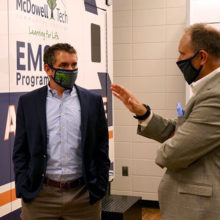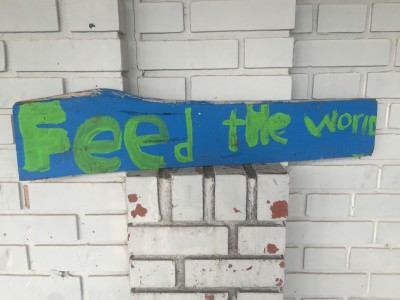
Abuse.
Neglect.
Hunger.
Mental illness.
A groundbreaking study on adverse childhood experiences indicated, “Childhood abuse, neglect, and exposure to other traumatic stressors which we term adverse childhood experiences (ACE) are common. Almost two-thirds of our study participants reported at least one ACE, and more than one of five reported three or more ACE. The short- and long-term outcomes of these childhood exposures include a multitude of health and social problems.”
I walked away with many takeaways from the Adverse Childhood Experience (ACE) Southeastern Summit I attended last week sponsored by the Mountain Area Health Education Center, but chief among them was that a pathway exists that could allow us to create an environment for all students to feel supported in the face of difficulties. Supported even in our schools.
ACE often manifest themselves within the classroom, and we have not often provided school staff with the necessary tools to properly support students who are facing real difficulties outside of the walls of the schoolhouse.
From 1995 to 1997, a study of more than 17,000 participants found that as the ACE score increased for participants, so did their risk of alcoholism, depression, illicit drug use, suicide, and other issues that create detrimental health impacts. The Compassionate Schools Initiative addresses these experiences in the school environment.
Dr. Robert Anda, the keynote for the conference and a lead designer of the landmark ACE study, spoke to the power of compassionate schools.
The state of Washington is a leader for compassionate schools and they have laid out the ten principles of a compassionate school. They believe that this is ultimately a process, not a program. The principles are below:
1. Focus on culture and climate in the school and community.
2. Train and support all staff regarding trauma and learning.
3. Encourage and sustain open and regular communication for all.
4. Develop a strengths based approach in working with students and peers.
5. Ensure discipline policies are both compassionate and effective (Restorative Practices).
6. Weave compassionate strategies into school improvement planning.
7. Provide tiered support for all students based on what they need.
8. Create flexible accommodations for diverse learners.
9. Provide access, voice, and ownership for staff, students, and community.
10. Use data to identify vulnerable students, and determine outcomes and strategies for continuous quality improvement.
Buncombe County Schools received a grant in excess of one million dollars to pilot the compassionate schools process, and they are one year into implementation. I had the opportunity to catch up with David Thompson, the director of Student Services for Buncombe and a leader in bringing the initiative to the county.
Thompson praised the promise “of an integrated approach” that brings law enforcement, health agencies, schools, and other organizations together to better understand and address the role of adversity for our students.
As I spoke to conference attendees, it struck me that whether we are discussing health, brain development, literacy, or other components of the childhood experience that more research than ever before showcases the importance of investing in integrated approaches from the first years of the life of a child.
When I was a student at UNC-Chapel Hill, I mentored children from a low-wealth school in Hillsborough who were below grade level in literacy. Mentoring was often a fun experience, but it was certainly not an easy one. I knew from my own childhood that we can all face substantial difficulties in our life, but I quickly learned how challenging it can be to help others and showcase empathy. I was eighteen years old, and I had thirty minutes three times a week with each student. I would get frustrated when my students did not show up.
I still remember one of my students who had missed two sessions in a row. When she showed up next, I was prepared to preach on the importance of showing up, but I began by asking her where she had been. Her response stopped me in my tracks.
“My cousin died,” she said in a very matter of fact voice that spoke to someone who had already seen too much, too young.
This girl had faced tragedy, she lived in poverty, and she grappled each and every day with a whole array of challenges. While I had thirty minutes one-on-one with her three times a week, and could barely scratch the surface of her life, her teachers were educating dozens of students each day, many facing similar challenges.
In my experience, the best conferences challenge your assumptions, provoke you to think, and leave you walking away wanting to implement change in your community. The ACE Southeastern Summit did just that last week.
Last week, as I walked out of the ACE Summit, I thought back to my experience in Hillsborough.
What if that young girl had been enrolled in schools that had fully embraced the compassionate schools process?
What if more of the authority figures in her life had been trained to understand the role of adverse childhood experiences?
What if empathy was a skill that we focused on teaching?
We might well live up to our official state toast, as Rob Thompson challenged us last week, to be the state:
“Where the weak grow strong, and the strong grow great.”


